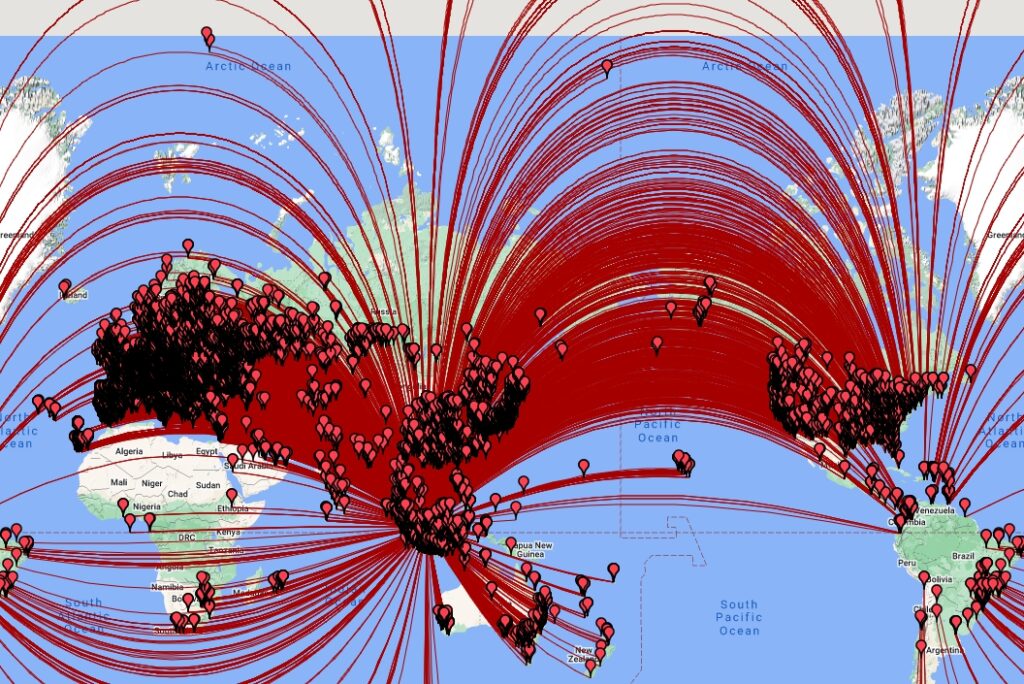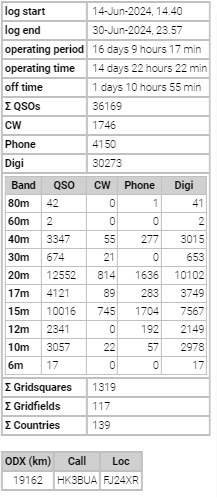



We are thrilled to share the final count for our recent event! A staggering 36,169 QSOs were logged, with approximately 7,917 being duplicates (21.88%), and 139 DXCCs were worked just within 15 days.
A Breakdown by Region:
- Malaysian HF Operators: We were delighted to work 69 times from West Malaysia (more than 20 hams) and 28 times from East Malaysia (less than 10 hams).
Top 5 Participating Countries by Rank:
- Japan: A phenomenal 11,407 logs from Japan joined us!
- Italy: Following closely behind were 3,270 Italian logs.
- Russia EU: Wonderful big-gunned 2,096 Russian logs.
- Germany: A big thank you to the 1,897 logs from Deutschland who participated.
- Spain: A talk-actively 1,522 logs from Spain that mostly in Phone modes.
Special Mentions:
While we connected with a vast number of stations, a warm welcome goes out to those from Costa Rica, Iraq, and Bahrain – the rarest QSOs during the DXpedition!
Thank You and Next Steps!
A sincere thank you to all the stations who participated and made this event a success! We hope to connect with you again soon.
Paper QSL Information:
QSL confirmations (OQRS) are welcome via ClubLog or by sending a paper QSL with 4 green stamps.
Special QSL Card:
We’re currently designing a unique QSL card for our special rare call 9M1Z. These are anticipated to be printed next week and ready for mailing next 2 week.
Stay tuned for further updates!
Technical Observations
While we were happy to connect with so many stations, we noticed a trend in certain regions. Most operators from India, Malaysia, Indonesia, and potentially other areas, may not have been familiar with using Split/RIT modes for phone and CW operation, or Fox/Hound for FT8.
We encourage all hams to continue learning and mastering these techniques to enhance their hunting DXpedition experiences. This is to avoid you getting troubles and ignore/blacklist with the future DXpeditioners and any other hunters later on.
Surprise Band: 1-3 Hours per Band and Mode
Interestingly, we also noticed a pattern where bands seemed to close down after experiencing heavy pile-ups for 1-3 hours, reaching around 200 QSOs per band and mode. This phenomenon affected all operating modes, including phone, CW, FT8, and FT4. This appears to be a recurring pattern in Malaysia, specifically Borneo Island since the early 2020s.
SUMMARY: The Power of Propagation:
It’s important to acknowledge the significant role of propagation conditions during the DXpedition. Borneo Island faced frequent one-way propagation, making communication a challenge. Additionally, recent geomagnetic storms further impacted HF signals.
The final week was particularly affected, with HF frequencies becoming unusable. Despite our best efforts to beam towards North America, South America, and South Africa, one-way propagation persisted.
Low bands (80m, 60m) and high bands (10m) were largely unusable, while 6m showed intermittent activity. These challenges are typical for the June season, often due to unpredictable weather and monsoon conditions on Borneo Island.
Thank you once again for being part of this exciting DXpedition! We look forward to future opportunities to connect with the global ham radio community.
